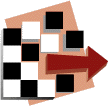I guess the reason I loved this book so much was because it was
about me and my work. As I
read it I kept nodding my
head and recognizing articles and names. I had been doing my Masters work
in the mid 80's on computers in the high school writing class.
Working on my thesis was difficult since very little existed on
this idea except for these few articles. I spent many hours in the
library at Teachers College trying to find these articles which
were far and few between. Not knowing of the conferences or lists,
I felt alone and was relieved when I discovered a lone article on
computers and writing in educational journals.
Other research was
impossible to locate. In reading this book, I discovered that I
was not alone. Others had been doing the same things as I had been
doing, but they were sharing with others. I was ecstatic when I
discovered listservs that had other teachers like me on them. For so
many years I had thought myself crazy when I would discuss
enthusiastically what I was doing in my high school English class
with computers. No one understood me. But when I began
reading this book, I found kindred spirits, recognized names, shared
experiences, and found I wasn't alone. I didn't know my
past and this book showed it to me. CTW introduced me to my colleagues.
This book is more than a history, it is "This is your Life."
 Susan
Halter's Review
Susan
Halter's Review
 Kip
Strasma's Review
Kip
Strasma's Review
 Return to PaperText Section
Return to PaperText Section
The author of this review,
Ted Nellen,
can be reached at
tnellen@mbhs.bergtraum.k12.ny.us.
 Respond to Kairos Interactive
Respond to Kairos Interactive
![]() Susan
Halter's Review
Susan
Halter's Review
![]() Kip
Strasma's Review
Kip
Strasma's Review
![]() Return to PaperText Section
Return to PaperText Section
![]() Susan
Halter's Review
Susan
Halter's Review
![]() Kip
Strasma's Review
Kip
Strasma's Review
![]() Return to PaperText Section
Return to PaperText Section